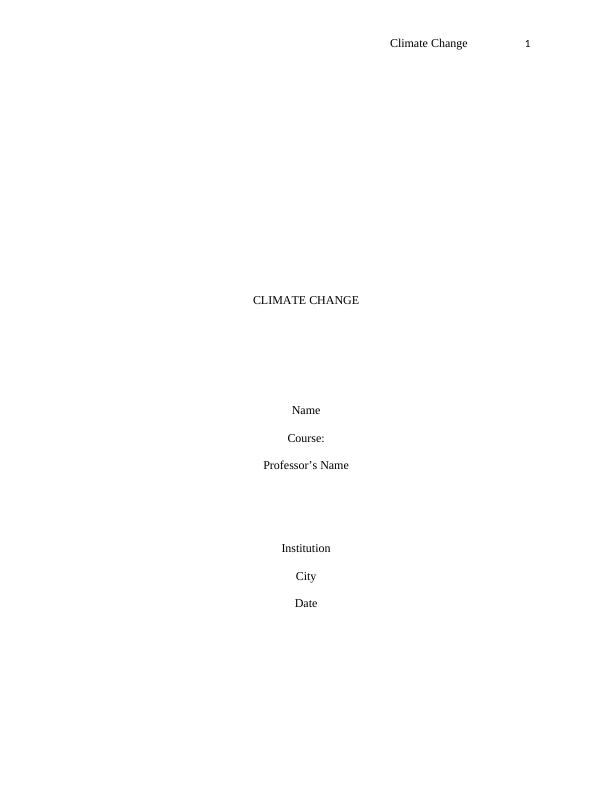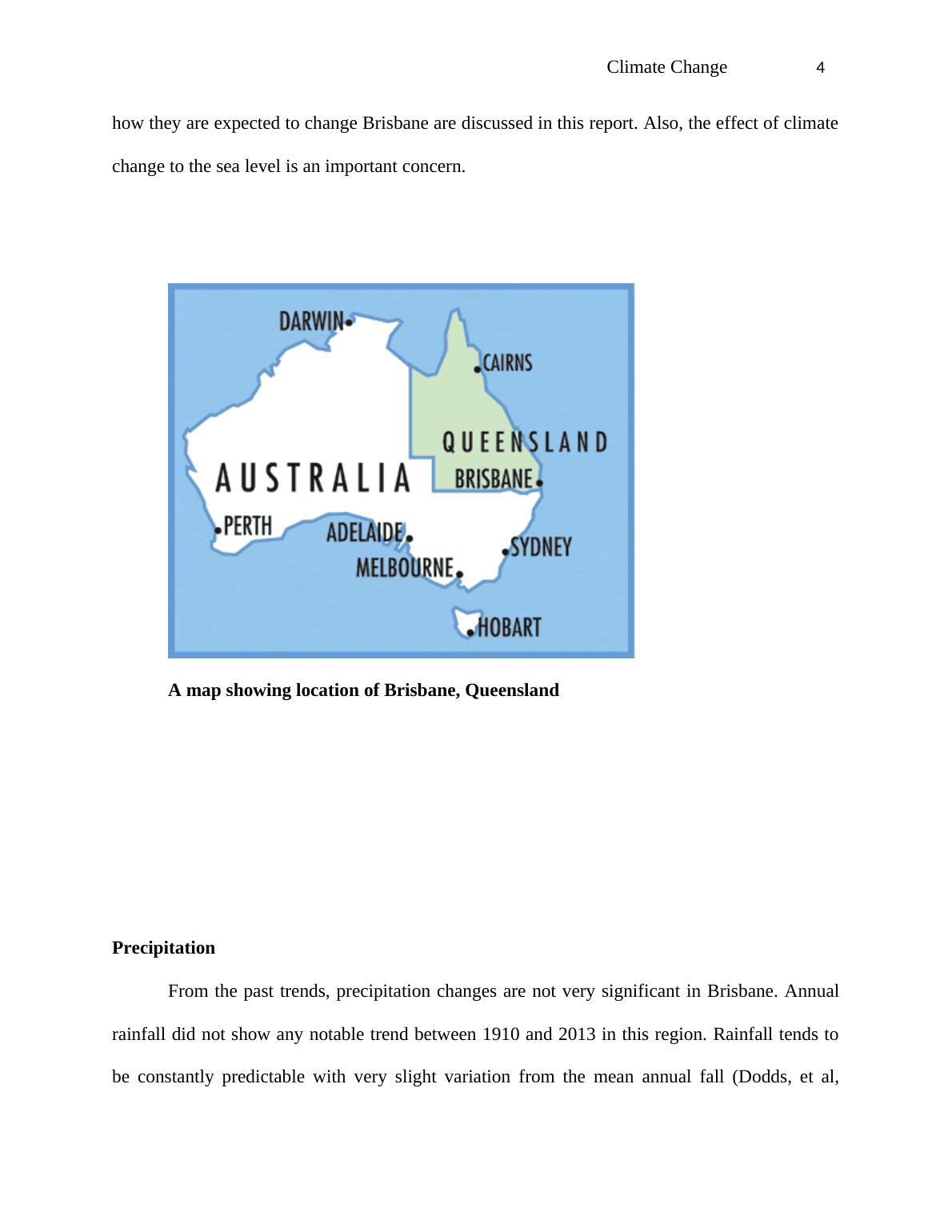Climate change in Brisbane, Queensland region
Added on 2019-10-30
17 Pages2904 Words157 Views
Climate Change 1CLIMATE CHANGENameCourse:Professor’s NameInstitutionCityDate

Climate Change 2 CLIMATE CHANGE IntroductionClimate change refers to change in global or regional climate patterns, which is mostlyattributed to increase in levels of greenhouse gases such carbon dioxide, methane, and nitrousoxides, due to extensive use of fossil fuels. The interaction of these gases and the naturalenvironment has led to what is now commonly known as global warming. Global warming is thegradual increase of average temperature that was in most cases noted from the mid-20th century.This increase in temperatures has direct and major impacts in elements of climate and weathersuch as precipitation, humidity, and wind. Long term effects of changes in such weatherelements result in climate change. In other words, temperature difference fuels major physicalprocesses changes that define the climate of a region. For example, for conventional rainfall,temperature difference will power evapotranspiration, create regions of low and high air pressurethereby causing winds, cause clouds formation and eventually cause precipitation. From thisexample, it can be seen that temperature affects almost all elements of weather. Consequently,variation in temperature will have a great impact on wind patterns, humidity, precipitation etc. On the global scale, Climate change has now caused observable effects on theenvironment that scientists had earlier predicted. Glaciers have been observed to sink, ice onrivers, strong hurricanes, the premature flowering of flowers among other effects. It is likely thatone day the Arctic is going to be ice free! It is projected that the sea level will rise by 1 to 4 feetby the year 2100 (Arthurson & Baum 2015). From the subject point of view, it can be seen thatclimate change will have several adverse environmental, social and economic impact.

Climate Change 3Climate change in Brisbane, Queensland regionBrisbane is a town located in Queensland region, North East Australia. The region iscomposed of varying landscape consisting of islands, sandy beaches, flat rivers and richagricultural lands. It is densely populated, with a higher number of population concentrated inurban areas. Human population and its associated human activities closely interact with theenvironment and the climate around and has resulted in the formation of region’s microclimate.Climate is an important subject since it is directly related to natural resources beneficial tohuman and their activities as well as to animal and plant life. With the aim of supportingAustralian natural resource management sector, eight natural resource management clusters,which are basically climatic regions, have developed by researchers (Marsh, et al. 2016). Theseclusters include central slopes, East coast, Monsoonal North, Murray basin, Rangelands,southern slopes, wet tropics and southern and south western Flatlands. Queensland regionborders East Coast cluster to the East and Central slopes cluster to the west. The climate ofBrisbane is moderated by climatic conditions such that at some points it is characterized with anintermediate micro climate which is as a result of the proximity of these two clusters (Hobday, etal, 2015). Due to climate change in Australia, and any other part of the world, recent studies haveshown that Brisbane will undergo a process of gradual environmental changes that will alter thepresent look of the region. As a result of these changes, the social life of people such asmigrations and refugee movements will be affected. Water supplies, food supplies, health andhuman settlement are some of the important things that are going to be directly and adverselyaffected. Elements of weather such as precipitation, humidity, wind, and temperature are themain items that determine climatic patterns of a region (Matthews 2012). These elements and

Climate Change 4how they are expected to change Brisbane are discussed in this report. Also, the effect of climatechange to the sea level is an important concern.A map showing location of Brisbane, QueenslandPrecipitationFrom the past trends, precipitation changes are not very significant in Brisbane. Annualrainfall did not show any notable trend between 1910 and 2013 in this region. Rainfall tends tobe constantly predictable with very slight variation from the mean annual fall (Dodds, et al,

End of preview
Want to access all the pages? Upload your documents or become a member.
Related Documents
Climate change and your home citylg...
|10
|2262
|278
Climate Change and the Role of International Agreementslg...
|8
|1342
|333
Sustainability and Climate Changelg...
|19
|2904
|67
Vulnerability of New York City to Disasters Question Answer 2022lg...
|6
|1219
|22
Is climate change a result of human activitieslg...
|7
|2039
|104
Essay on Impact of Climate Changes on Human Beingslg...
|7
|2065
|14
